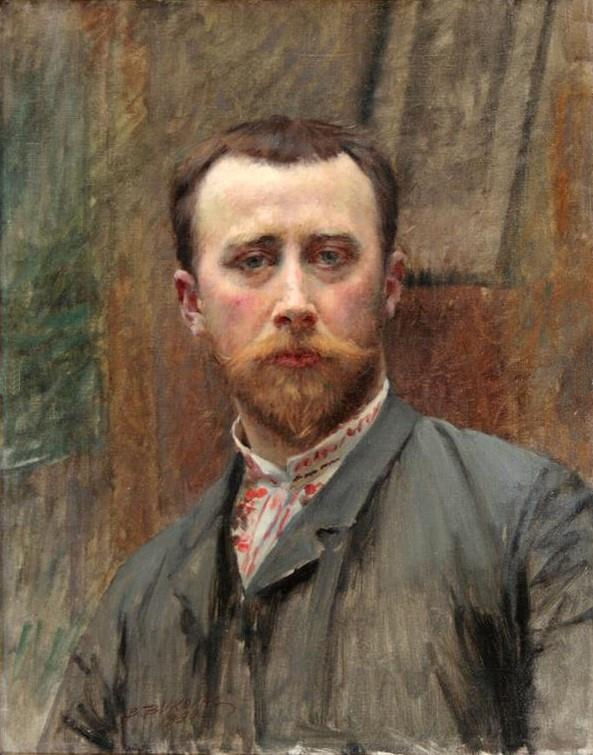Vlaho Bukovac in the new Cavtat edition
- nikolaradonich
- Jul 15
- 4 min read
Updated: Aug 23
170 years ago, on July 4, 1855, the great Croatian painter Vlaho Bukovac was born in Cavtat. He is most significant for the Croatian cultural scene as the founder of Croatian Modernism. He enrolled at the Academy of Fine Arts in Paris in 1887 and graduated in the class of Professor Alexandre Cabanel (1823-1889). As a Parisian student, he became famous by participating in the Paris Salon*, thus gaining European fame very early on. He was most popular as a portraitist, and kings, emperors, merchants, academics, and ordinary people posed for him. In fact, looking at his portraits today, we see the pulse of social events of the late 19th and early 20th centuries.
(*The Paris Salon was, beginning in 1725, the official art exhibition of the Académie des Beaux-Arts in Paris. The Salon was the largest annual or biennial art event in the Western world.)

In addition to being a portraitist, he was an excellent landscape painter, and compositions with mythological themes were Bukovac’s special love. He painted large wall compositions, templates for printed matter, and church inventory, so he deservedly holds the title of the most productive Croatian painter. Today, his paintings are kept in European museums, numerous private collections, and Croatian institutions and churches.
Vlaho Bukovac, besides being a great artist, was also a great success in social circles. Wherever he lived and worked, he brought freshness and progress, cared for the needy and helped his native land. He lived in Paris, Zagreb, Vienna and Prague, and always returned to Cavtat, his native nest. He described his adventurous life in his Autobiography, from which we also learn about intimate moments of the great painter’s life.
The birthplace of Vlaho Bukovac is today a museum. With its collections, and especially the archive collection, it is the beginning of all research on the Bukovac family. And not only about Bukovac’s paintings, but also about the life of Cavtat from the end of the 19th and beginning of the 20th centuries. Located in the very center of Cavtat, the Bukovac House has retained its shape from 1902 with the typical Cavtat gardens and all other elements that were defining for the urban Cavtat area of that time. Already in 1922, after Bukovac’s death, a gallery was established on the first floor of the house, in the space of the painter’s studio, and it was open to visitors. Thus, even 100 years ago, small Cavtat had a large gallery that delighted everyone who visited it. The gallery was opened by daughters Ivanka and Jelica Bukovac, both academic painters who wanted the memory of their father not to fade. Despite all the ups and downs over the status of the house, the heirs fought for the house to be given a public purpose and for it to be taken over by the cultural institutions of the state at the time.

Vlaho Bukovac died in Prague in 1922 as a celebrated painter and professor at the Prague Academy of Fine Arts. After his death, his work was often the subject of controversy in academic circles. The bibliography of Vlaho Bukovac is enormous, and the greatest merits go to Vera Kružić-Uchytil, a Croatian art historian (1930–2012), and Igor Zidić (1939–), an art historian, art critic, poet, and essayist, in fact the greatest living expert on Bukovac’s life and work.
Kružić-Uchytil catalogued the holdings of the Bukovac House as well as most of Bukovac’s works. She graduated with a thesis on Vlaho Bukovac and is the author of Bukovac’s first monograph, “Vlaho Bukovac – Life and Work”, which was first published in 1968. This is the starting point for research for anyone interested in Bukovac.
Numerous other authors have written about Bukovac, and dozens of monographs and hundreds of articles about his paintings have been published. And as time passes, new works by Vlaho Bukovac are discovered, new circumstances are revealed, and his oeuvre becomes increasingly interesting for today.

For Igor Zidić, Bukovac is a lifelong topic of research. This year he has compiled his findings and new contributions in a large monographic edition of 915 pages. The publisher of this monograph is the Bukovac House, which is part of the Museums and Galleries of Konavle.
Igor Zidić has included in this edition newly discovered works by Bukovac, and has brought a large comparative picture of cultural life in Croatia during Bukovac’s life. This monograph contains most of what can be known about Vlaho Bukovac — a rich and detailed chronicle, photo documentation, as well as reproductions of Bukovac’s most important works. As Josip Belamarić, one of two reviewers of this magnificent monograph, says: “The monograph on Bukovac is the culmination of his decades-long engagement with the phenomenon of Croatian Modernism and this painter, whom he says was a ‘global nomad before today’s globalization’, an erotomaniac, a hedonist, a walker and cyclist, a globetrotter and a guest worker…with complete focus on his art work. (…) The book offers exceptional reading pleasure because it brings a whole kaleidoscope of new observations about individual Bukovac works, and it is written with the author’s characteristic care for the use of the Croatian language.”
You can find more here:
- https://www.migk.hr/novost/item/1114-predstavljamo-monografiju-igora-zidica-vlaho-bukovac-1855-1922




